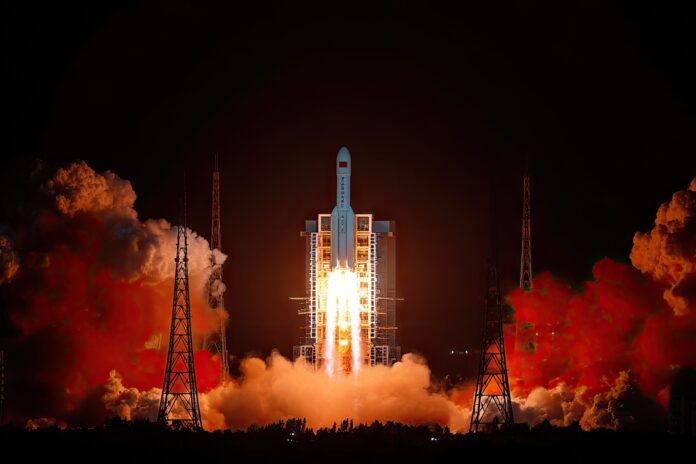Unveiling the Next Frontier: Tianwen 2’s Historic Journey Begins
The Tianwen 2 spacecraft is making headlines after transmitting its first image back to Earth as it embarks on an extraordinary voyage towards the enigmatic ‘quasi-moon’ asteroid 2016 HO3. This mission stands out not only for its ambitious scientific aims but also for its advanced technological ambitions, firmly positioning China at the forefront of asteroid exploration and sample return missions.[1][5]
The Mission at a Glance
On May 28, 2025, the Tianwen 2 probe successfully launched atop a Long March 3B rocket from the Xichang Satellite Launch Center in southwest China. The mission, aptly named “Questions to Heaven,” reflects China’s ongoing quest to unravel the secrets of the cosmos. More importantly, Tianwen 2 aims to retrieve pristine material from the near-Earth asteroid 2016 HO3—our planet’s constant celestial companion—before venturing out to study a distant comet.[1][2][5]
What Makes Asteroid 2016 HO3 So Fascinating?
2016 HO3, often described as a quasi-satellite or quasi-moon of Earth, occupies a unique orbit. While it circles the Sun, it also appears to loop around Earth, making it a prime subject for scientists hoping to decode the origins of our solar system.[5]
First detected by the Pan-STARRS telescope in Hawaii in 2016, this small asteroid could harbor primordial materials that have remained largely unchanged for billions of years. Because of its proximity and unusual dynamics, 2016 HO3 offers an unparalleled window into the early solar system and planetary formation processes.
Key Objectives: More Than Just a Close Encounter
- Sample Collection: Tianwen 2 will attempt to collect and return asteroid samples to Earth by 2027, making China only the third country to achieve this after Japan and the United States.[4][5]
- Comet Exploration: Following the asteroid phase, the probe will set its sights on main-belt comet 311P, extending the mission’s scientific reach even further.[4]
- Long-Term Vision: The entire mission, expected to last around a decade, could redefine our understanding of the solar system’s formation and evolution.[5]
Technological Innovation at Its Core
Tianwen 2 integrates a suite of sophisticated instruments for navigation, sample acquisition, and deep-space communication. Its operational resilience will be tested across varied cosmic environments, requiring both ingenuity and adaptability. Each milestone—starting with the transmission of its first in-flight photo—demonstrates China’s commitment to pushing the boundaries of space technology.[1][3]
Why This Mission Matters
Besides advancing scientific knowledge, the Tianwen 2 mission exemplifies international competition and cooperation in deep space exploration. With the successful sample return, China would cement its role as a leader in planetary science, joining ranks with the United States and Japan. This leap forward could encourage future collaborative ventures and inspire new generations of scientists and engineers worldwide.
Looking Forward: The Decade Ahead
As Tianwen 2 continues its journey, the world eagerly awaits new data and discoveries. Initial photos are just the beginning; the spacecraft promises to shed light on some of the universe’s most profound mysteries. Space enthusiasts, policymakers, and researchers should watch closely as Tianwen 2 unlocks the next chapter of humanity’s cosmic story.
References
- Space.com: Sampling a ‘quasi-moon’: What’s next for China’s newly launched Tianwen 2 asteroid-sampling mission
- China launches Tianwen-2 to retrieve asteroid samples
- Tianwen-2 – Wikipedia
- Friends of NASA: China’s Tianwen-2 Mission Seeks Answers from Mysterious “Quasi-Moon” Asteroid



